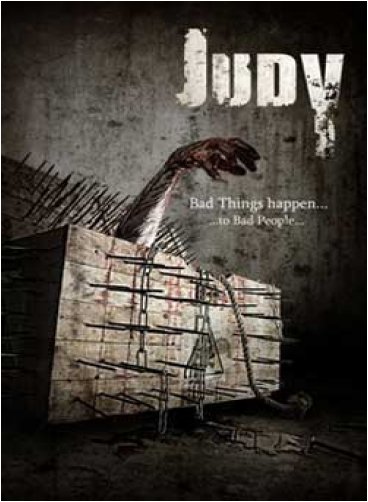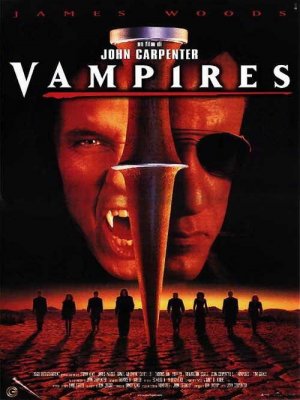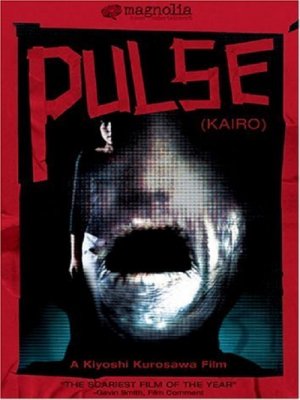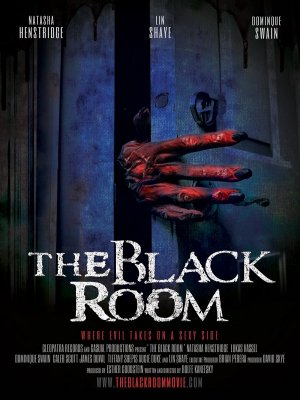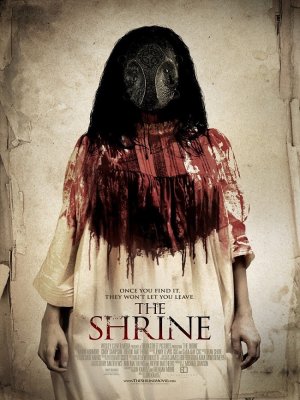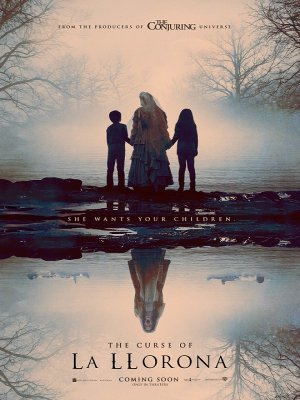Judy
Bad things happen to bad people. That’s what Ursula, the ring leader of a deranged group of street performers called “The Crows”, always says. For no apparent reason, the gang starts to torment Mary and Judy: a young car driver and her dog. Her only crime was not paying attention to the annoying street performers. For Mary, the curtains of the most insane and dangerous show will rise – and fall. The Crows’ show is not just about blood. We proudly assure you it will be the scariest, most uncomfortable and grotesque performance you will ever see.
Let me start off this review by saying that I am not a fan of clowns. I don’t mean that in a “I flip out when I see them, they’re so scary” kind of way. I mean that I think they’re boring and overused. Thanks to Stephen Kings’ Pennywise (from It) and northern Illinois’ John Wayne Gacy, we’ve been inundated with clowns in our horror for the past thirty years, and every time it looks like they’re going away, they’re right back in our faces with the Insane Clown Posse and a flood of unoriginal, over-the-top clowns-as-killers horror films. It’s rare that any movie with clowns in it will leave a good impression on me anymore. And then along comes Emanuele De Santi’s Judy.
Fans of the genre might recognize the name Emanuele De Santi, as he is the writer, director, and plays the title character in a certain 2011 gorefest called Adam Chaplin. With Judy, De Santi opts for a slightly different approach; there’s still some horrific gore here, but it plays second seat to a sense of dread and tension. What we end up with here is a horror movie that aims to put the scares ahead of the blood and gore, and it is very successful.
Mary (played by Orietta Babusci) is driving home from work when she gets a call from her mother. The call turns into an argument, so Mary pulls off the road to finish the conversation. After her phone seems to lose its signal, and the call is dropped, a strange woman with a clown/mime look to her approaches the car, startling Mary. The woman asks for some money, to which Mary says no, but apparently that no wasn’t enough. She keeps pestering, and finally Mary pulls a gun on her and then drives off. If only Mary had seen the opening scene…
Judy kicks off in shocking fashion, demanding your full attention. There are street performers that go under the name The Crows dragging a crate covered in spikes, then stomping another girl who did them wrong. We meet Ursula (the woman soon to be asking Mary for money, played by Marlagrazia Giorgi), a young female performer named Pierrot, and another performer wearing a mask with glowing eyes. After Ursula summons Mr. Scissor – a “trick” involving a small hand puppet poking out of the spiked crate and dancing about – Pierrot gives in to temptation and opens the crate, a no-no in the world of the Crows. Whatever is in there causes her to gasp in fright. Shortly after breaking the rules, she’s brutally assaulted, and a little of the Adam Chaplin gore stains the screen as she is destroyed in front of us. If they’ll do this to one of their own, what kind of trouble will Mary find herself in?
As you’ve noticed, the main character’s name is Mary, not Judy. Judy is her dog, but an equally important part of the film. After her run-in with Ursula, Mary heads home and goes on with her life, but strange things start happening at her place. Her clothes line falls over outside, strange noises start coming from somewhere in the house, windows that were closed suddenly are open, a strange phone number keeps calling her but no one ever says anything on the other end. And then Judy disappears, and when Mary is out looking for her, she sees someone walking along her roof.
Judy feels like a haunted house movie, which is impressive because it’s not. There is an intense sense of claustrophobia as we follow Mary around her small place, knowing there’s someone in there, or maybe just outside a window, waiting to get her. And every time it seems that she’s about to discover the truth, something else happens to drag her even further down. A strange hole has been drilled in her floor, she sees someone out of the corner of her eye (or did she?), there must be someone crouched underneath the crumpled robe on the bathroom floor. And then she hears her dog bark, and it’s coming from somewhere inside the house. And that’s just a part of what you’ve got coming at you.
De Santi masterfully creates a building sense of dread that keeps mounting all the way until the violent, bloody finale. If I just read the plot summary of this film, it might have been one I passed on. I am so glad that I didn’t, this is one creepy movie. It’s similar to a home invasion movie like Ils (Them) or even The Strangers, but in a much smaller, more cramped setting. And I can’t stress this enough, the tension building is done very, very well. There are surprises at the end, another thing I appreciated from a movie that could have just thrown it all out there right away and aimed to shock rather than scare. Judy isn’t just for fans of foreign horror, or for fans of clown-related horror; it’s for fans of horror, period. I’ve seen quite a few movies already this year, but Judy jumped to the top position of my early “Best of…” list. Highly recommended!

